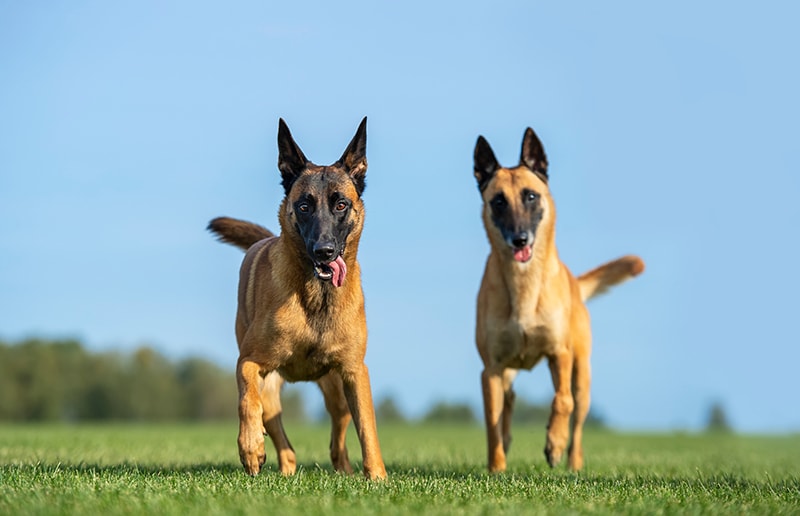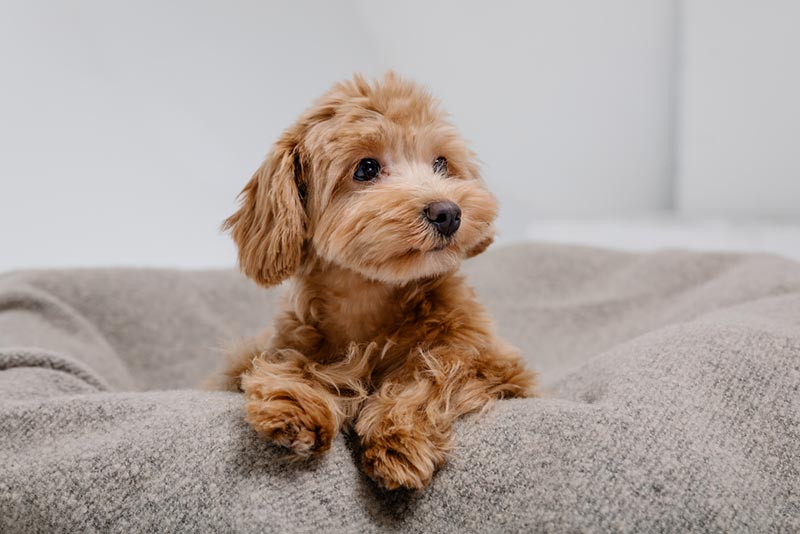12 French Dog Breeds: Info, Pictures & Origins

Updated on
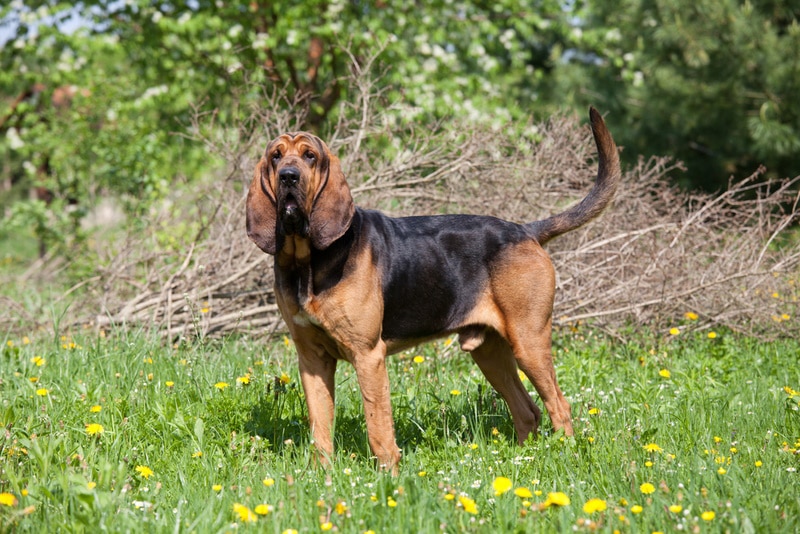
France gave us beautiful cities, the Tour de France, the camera phone, amazing art and literature, and delectable food, but they also gave us some incredible dog breeds! Many breeds are native to France, but some are not very common outside of their native land. However, other French breeds grew in popularity and made it to other countries, which allowed us to love them as our companions. In this article, we’ll discuss a few French breeds and touch on their fascinating history.
The 12 Native French Dog Breeds
1. French Bulldog

| Height: | 11 – 13 inches |
| Weight: | Below 28 pounds |
| Group: | Non-sporting group |
The French Bulldog is a small and unique breed that is one of the most popular small breeds in the states today., and in fact, around the world. It is recognized by its compact size, like a miniature Bulldog, and its distinctive and trademark “bat ears.” They are popular pets among apartment-living owners because they are small, good-natured, friendly pups that will happily stay by their owner’s side. Although the Frenchie has English roots, the breed was refined in France.
After the Industrial Revolution, lace makers in England were displaced and began to settle in France, where they brought their new toy Bulldog breed with them. Over a few decades, the toy Bulldogs were crossed with other breeds, such as Pugs and Terriers, and in the process, the trademark bat ears were developed. These cute little French dogs were given the name Bouledogue Français. This new breed became popular in Paris, and by the end of the 19th century, the Frenchie’s popularity grew in Europe and America.
2. Papillon

| Height: | 8 – 11 inches |
| Weight: | 5 – 10 pounds |
| Group: | Toy group |
The word “Papillon” translates to butterfly in French, which became fitting for this small breed with its signature wing-shaped ears. They are tiny dogs measuring 8–11 inches tall but not hard to spot with their large but adorable ears. They are sweet, highly intelligent dogs that owners describe as friendly, alert, loving, and happy.
The Papillon is one of the oldest toy breeds developed in Renaissance times. They were created by mating toy breeds with Spaniels, known as “Dwarf Spaniels” in their time. Papillons were made popular in early breeding centers of Spain and Italy, and they have been depicted in artwork dating as far back as the 16th century. However, France is also credited with developing the breed.
Apart from its name, it was loved by French royalty such as Louis XIV, Madame de Pompadour, and Marie Antoinette. Marie Antoinette was overthrown by revolutionaries and was sentenced to being guillotined in public, and while she awaited her beheading, her beloved Papillon Thisbe stood devotedly outside the prison.
3. Grand Bleu de Gascogne

| Height: | 13 – 15 inches |
| Weight: | 35 – 45 pounds |
| Group: | Hunting/working breed |
The Grand Bleu de Gascogne is a laid-back and calm breed rarely found outside of France. Some can be found in the UK, perhaps because of its proximity to France, but they are mostly unknown in the US. They look like typical Hounds with large floppy ears and a distinctive “blue” coat color. They are a friendly and loving breed bred for hunting, but they are not recognized by the American Kennel Club (AKC).
The Grand Bleu de Gascogne has a long French lineage dating back to medieval times. They descended from the St Hubert Hound, which is an extinct blood type today. Nobles and royalty used the Scent Hounds to hunt bears, wolves, and boar in France, and they were later used to recreate the Basset Bleu de Gascogne. The United Kennel Club recognized the Grand Bleu de Gascogne in January 1991.
4. Great Pyrenees
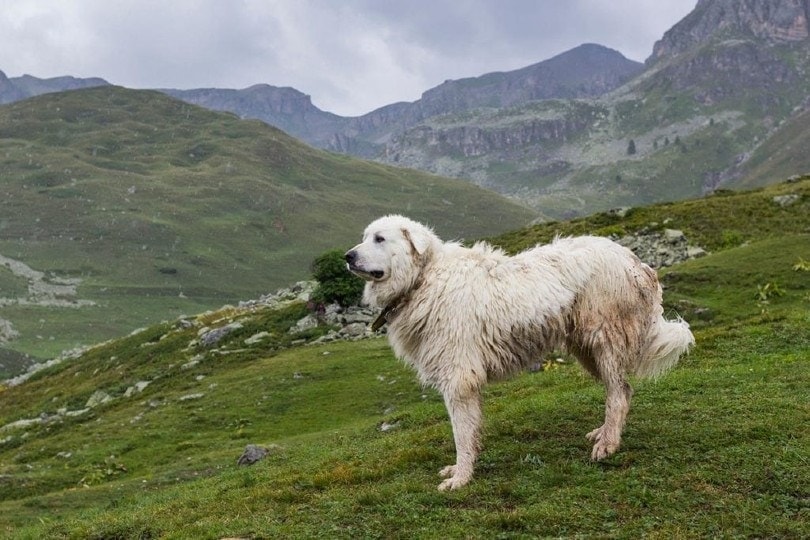
| Height: | 25 – 32 inches |
| Weight: | 85 – 100 pounds |
| Group: | Working group |
The Great Pyrenees is a large working breed recognized for their thick white coat and majestic appearance. They are strong mountain dogs that were once used to protect sheep from wolves on snowy mountaintops, and today they are still loved for their protective nature and gentle companionship.
The Great Pyrenees was initially bred many centuries ago as herding and guard dogs in the Pyrenees Mountains between France and Spain. Their thick white coat made them resilient to cold temperatures and easily camouflaged in snow. Their job was to watch over the sheep and deter predators. This amazing dog could patiently sit on top of a snowy mountain for days but showed heroic courage when it came time to defend their flock.
In the 17th century, they proved to be excellent guardians of the chateaux and were adopted as the Royal Dog of France in the court of King Louis XIV.
5. French Spaniel
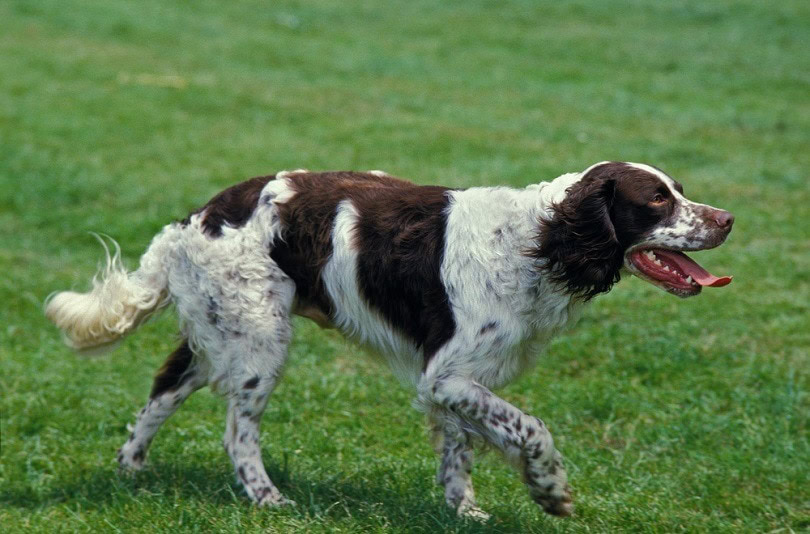
| Height: | 21.5 – 24 inches |
| Weight: | 50 – 60 pounds |
| Group: | Foundation stock service |
The French Spaniel is the largest of all the Spaniel breeds. It is an intelligent hunting dog that is also talented in retrieving. As a companion, they are docile, calm, sociable, playful, highly intelligent, and make excellent watchdogs.
The French Spaniel was developed as a hunting dog, descending from dogs in the 14th century in France. While they were popular among royalty during the Middle Ages, they came close to extinction in the 20th century, but the breed was saved by a French priest known as Father Fournier. The first standard of the French Spaniel was drawn up in 1891 and has been revised numerous times since. It was imported to America around 1997.
6. Briard
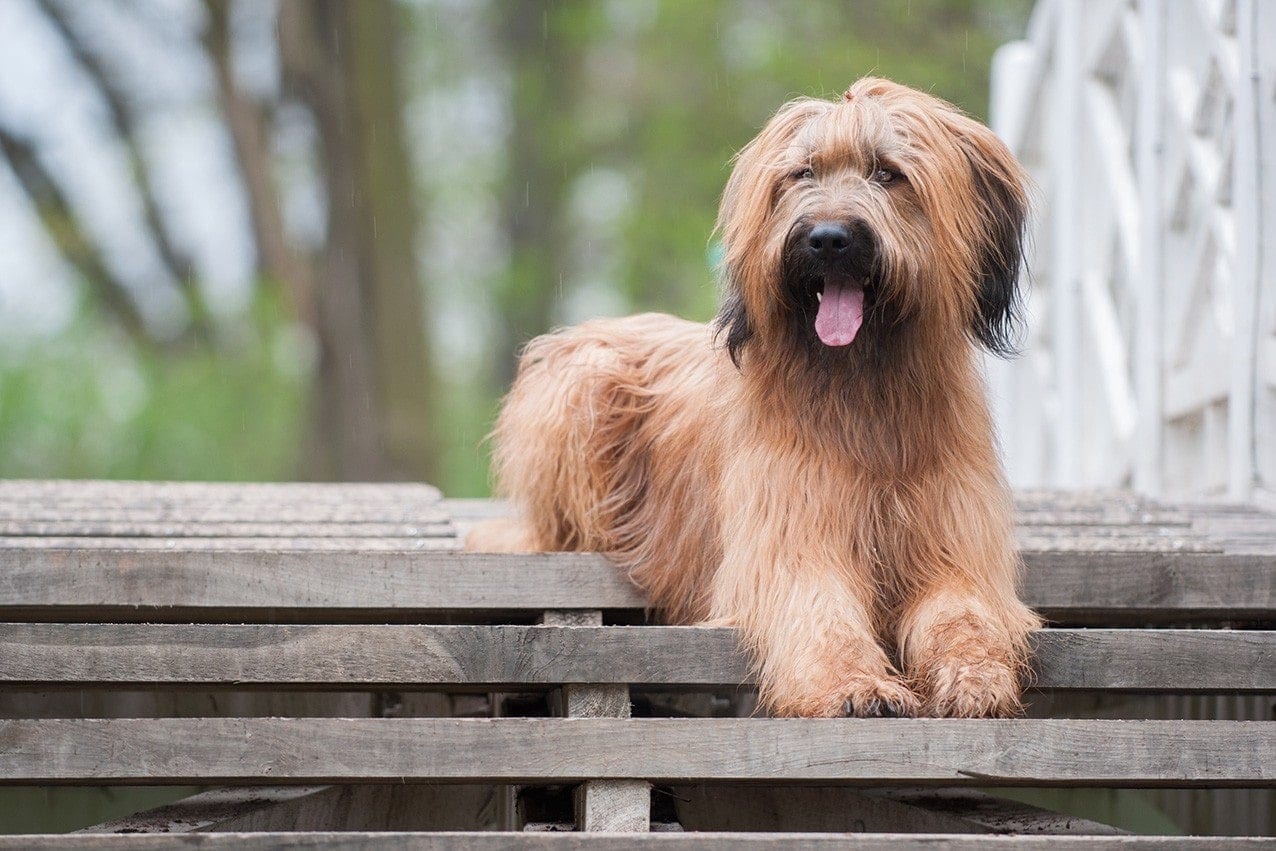
| Height: | 22 – 27 inches |
| Weight: | 55 – 100 pounds |
| Group: | Herding Group |
The Briard is a herding breed that carries many classic traits of a herding dog. They are intelligent, trainable, protective, high in energy, and eager to please. Briards are easily distinguishable by their large bodies wrapped in wiry fur and eyes hidden by a long fringe. They are native to France and not hugely popular in the United States.
The Briard is known as the Chien Berger de Brie in its native land and has been a working breed since the time of Charles the Great. Briards were developed by French dairy farmers to herd and guard sheep that were used to make the cheese known as brie, hence the breed’s native name. By the 1800s, the Briard was a beloved canine and was proudly showcased at the first French dog show in 1865 in Paris. The Briard was named the official war dog of the French army in WW1.
7. Basset Hound
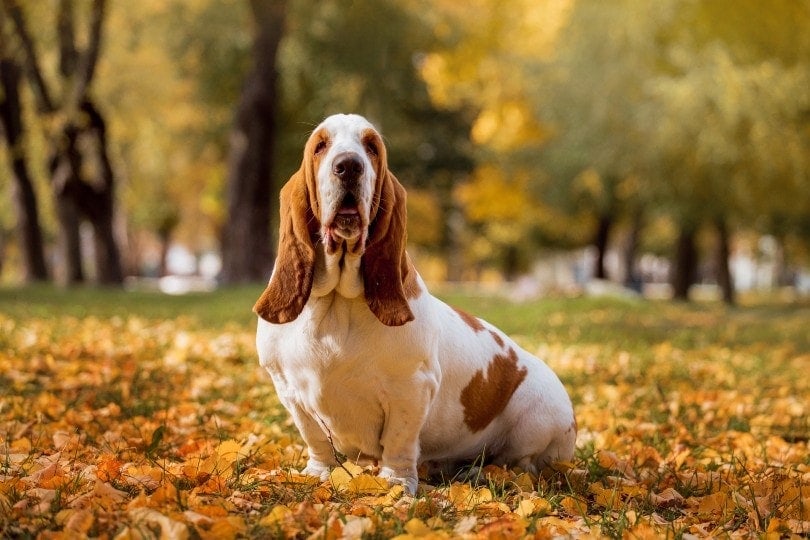
| Height: | Up to 15 inches |
| Weight: | 40 — 65 pounds |
| Group: | Hound Group |
When you hear the name Basset Hound, you immediately picture adorable, floppy ears, short, stocky bodies, and facial expressions that can seem sad. However, they are a happy, friendly breed that is surprisingly strong. They are favorites worldwide and are known for their hunting abilities.
Basset is the French term for low, which is fitting for the breed’s low-lying body. They were originally bred in France to hunt rabbits and hares. The Basset Hound originated in France in the 6th century and is thought to be a descendant of the St Hubert Hound. The Basset Hound was developed as a more dwarfed version with short legs that were useful for hunting small animals like rabbits and deer. They would drive their prey from undercover into the open terrain, where their hunters could then move in for the kill.
8. Dogue de Bordeaux
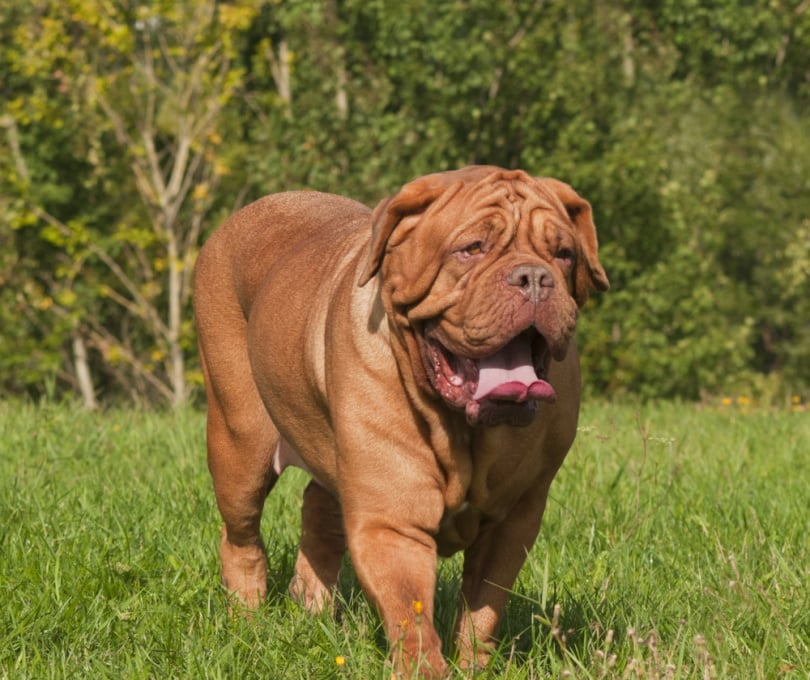
| Height: | 23 – 27 inches |
| Weight: | 99 – 110 pounds |
| Group: | Working group |
The Dogue de Bordeaux is a large and strong Mastiff-like that excels as a guard dog. They are courageous, affectionate, and loyal, and despite their somewhat intimidating looks, they are sweet and sensitive companions. They are recognized by their loose skin folds that cover their large faces and a large head that takes the spot as the largest head in the world of dogs.
The Dogue de Bordeaux is the oldest of the French breeds whose history dates so far back that it is impossible to pinpoint their precise origins. In fact, they existed before France was even a country! Some theories claim that the Greek Mastiff types, the Tibetan Mastiff, and the Neapolitan Mastiff are close relatives. However, another theory suggests it is a native French breed that developed over thousands of years.
By the late 1700s, the Dogue de Bordeaux were used as prized guardians for noble estates, which ended with the French Revolution. They faced extinction at the time but became valuable as livestock herders earning them the nickname the “Butcher’s dogs.” By the mid-1900s, the breed was developed further and grew in popularity, and while it was first introduced into America in 1959, it only gained popularity in 1989 thanks to the well-loved film Turner & Hooch.
9. Barbet
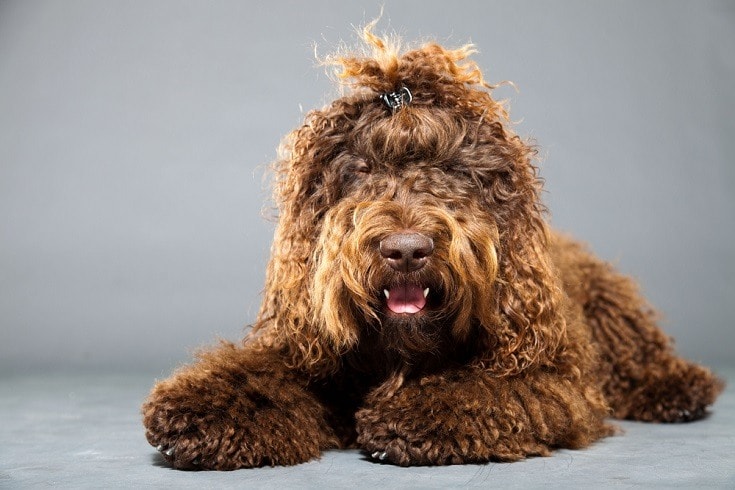
| Height: | 19 – 24.5 inches |
| Weight: | 35 – 65 pounds |
| Group: | Sporting Group |
The Barbet dog is pronounced bar-bay and is derived from the French word “Barbe,” which means “beard.” The Barbet is a French water dog used to locate and retrieve birds. They have a thick woolly coat that can be likened to that of a Muppet. They have droopy ears that are just as shaggy, so they blend into their heads. Despite their goofy appearance, they are an intelligent breed and are calm and loving companions.
The Barbet is native to France and was initially used for hunting water game. They are close relatives to the Briard and the Poodle with similar coats and webbed feet. They would drive their water prey into the mud, which earned them the nickname “mud dogs.” The Barbet has a long-standing history, but some believe they originated as early as the 8th century.
They almost became extinct after the World Wars, but some devoted fanciers rescued the breed. Although they served for many years as water hunters and companions, they are still relatively rare today and were only classified in 2020 by the AKC as a member of the sporting group.
10. Beauceron
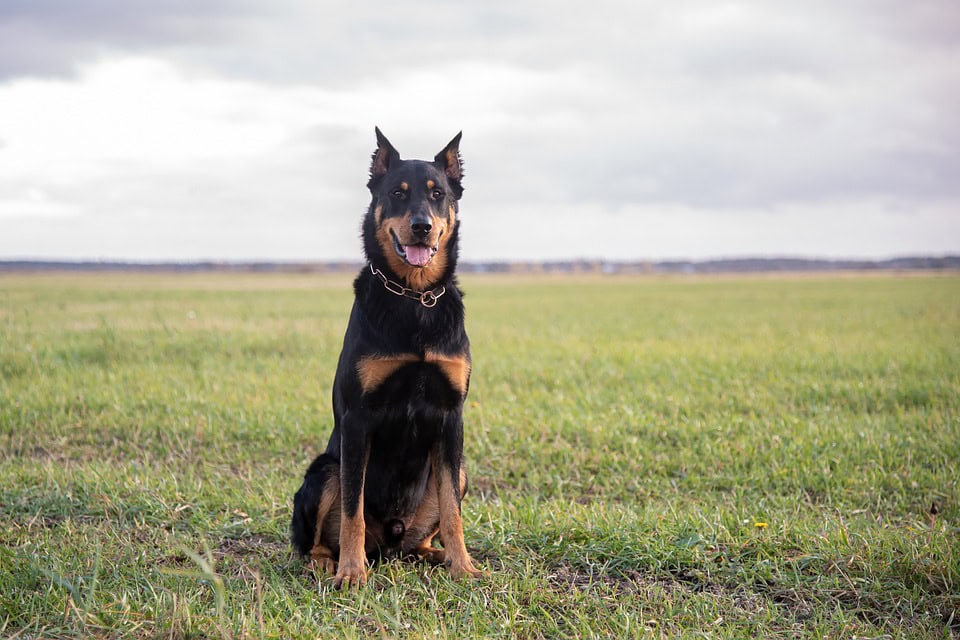
| Height: | 24 – 27.5 inches |
| Weight: | 70 – 110 pounds |
| Group: | Herding Group |
The Beauceron is a French sheepdog that also goes by the name Berger de Beauce or Bas Rouge but is inspired by the breed’s red “socks” at the bottom of their legs. They are relatively unknown outside their native land of France. They make excellent guard dogs, even more so with their imposing appearance. However, they are high-spirited, smart, and loyal.
The Beauceron is a working dog from France and was developed in the 1500s as a guardian of livestock. They are closely related to the Briard, another shepherd dog from France, where they were only differentiated in 1896. This breed also has a military history. They were used in military and police K9 work and the trenches during WWI. The Beauceron grew in popularity among the French public, where they were adored as companions.
11. Berger Picard
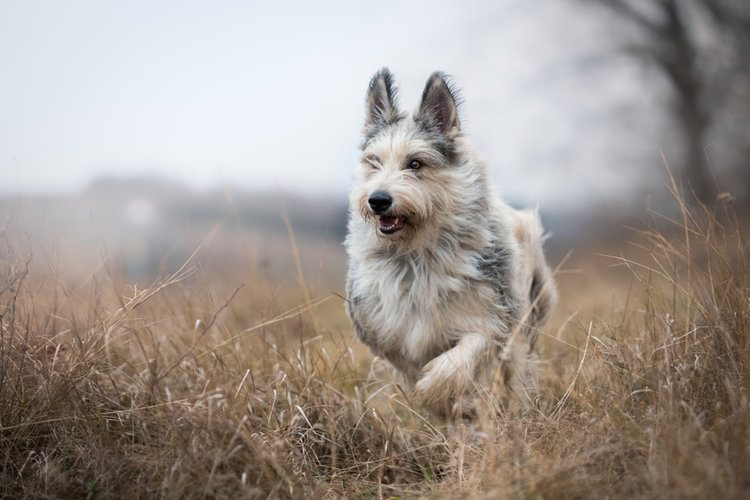
| Height: | 21.5 – 25.5 inches |
| Weight: | 50 – 70 pounds |
| Group: | Herding Group |
The Berger Picard, or Picardy Shepherd, is one of the oldest French sheepdogs. They have a distinct appearance with their goofy gaze, shaggy eyebrows, mustache, and beard, and one of their trademark looks is their erect ears, which can be spotted a mile away. They are a high-energy breed that loves to play and participate in canine sports, and their intelligence, loyalty, and friendliness make them prized companions.
The Berger Picard is one the oldest French sheepdog with close family connections to the Briard and Beauceron. Their name is derived from their homeland known as Picardy, which is a town made up of miles of pastures. The Berger Picard was showcased in France’s first dog show in 1863. While the events of the two World Wars brought several breeds close to extinction, the Berger Picard was very hard hit.
Fortunately, it made a comeback but is still a rare breed. The 2005 movie, Because of Winn Dixie, featured the Berger Picard, and in 2015, it was recognized further when the Berger Picard Club of America was admitted to the AKC.
12. Bloodhound
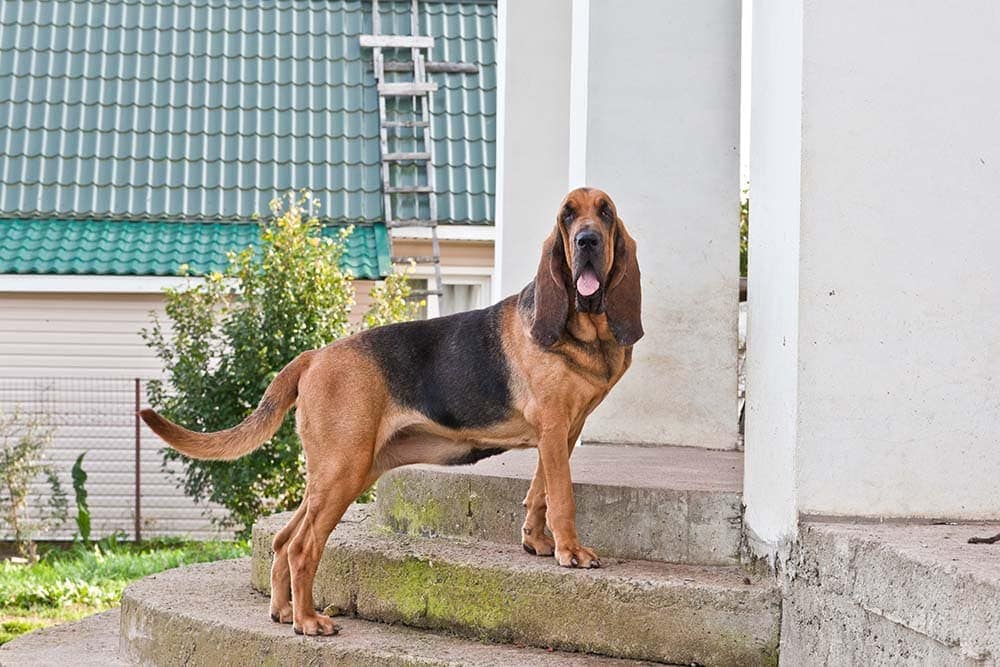
| Height: | 23 – 27 inches |
| Weight: | 80 – 110 pounds |
| Group: | Hound Group |
The Bloodhound is a large docile dog primarily known for its incredible tracking skills. Their distinctive features are their tall legs, long tails, and faces that droop with loose skin and wrinkles, deep-set, droopy eyes, and of course, long flaps for ears. They are docile, but when put to work, they have amazing stamina and the most incredible nose that can sniff for miles.
The Bloodhound we know today descended from the hounds bred by the 7th-century French monk St Hubert and from hounds bred by various other medieval noblemen. Their name comes from “blooded hounds,” with the word blooded meaning “of aristocratic blood” after the execution of the bishop’s breeding program. It wasn’t until the 16th century that these Bloodhounds were used to track humans.
Additional Information
Conclusion
Several incredible dogs are native to France, all with a rich and fascinating history. Some of the breeds are popular, well-loved companions in the U.S. today, while some still stay within the borders of their homeland and are very rare. Some gained popularity through noble feats, admirable guardianship, and hunting skills, and others were given the spotlight through film, where their breed was put on the map and made visible to dog lovers who didn’t know of their existence.
Dogs have been with humans for thousands of years, and their loyalty and companionship have stayed in their blood until today and will continue for many years.
See Also:
Featured Image Credit: Lenkadan, Shutterstock




